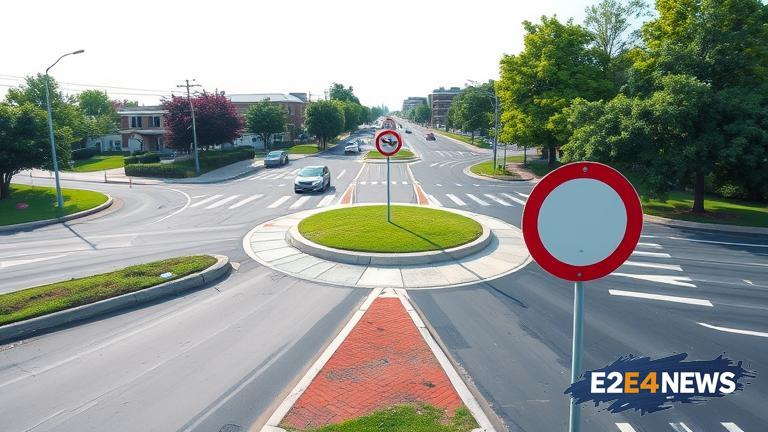The city of Hendersonville has been exploring ways to improve traffic flow and increase revenue, with a focus on roundabouts and parking. Roundabouts, also known as traffic circles, have been shown to reduce congestion and improve safety. However, some residents have expressed concerns about the effectiveness of roundabouts, citing confusion and difficulty navigating them. In response to these concerns, the city has implemented educational campaigns to inform drivers about the proper use of roundabouts. Additionally, the city has been working to improve parking revenue, with a focus on downtown parking lots and garages. The city has implemented a new parking management system, which includes pay-by-plate parking meters and a mobile payment app. This system has been shown to increase parking revenue and reduce congestion. However, some business owners have expressed concerns about the impact of parking fees on their customers. The city has also been exploring ways to increase parking revenue, including the implementation of parking permits and fees for special events. Despite these efforts, some residents have expressed concerns about the fairness of parking fees, citing the need for more affordable parking options. The city has responded to these concerns by implementing a discount program for frequent parkers and exploring alternative parking options, such as parking garages and lots. Furthermore, the city has been working to improve the overall parking experience, with a focus on wayfinding and signage. The city has implemented a new wayfinding system, which includes clear signage and mapping to help drivers navigate the city’s parking facilities. This system has been shown to reduce congestion and improve the overall parking experience. In addition to these efforts, the city has been exploring ways to increase revenue from parking, including the implementation of dynamic pricing and demand-based pricing. Dynamic pricing involves adjusting parking fees based on demand, with higher fees during peak hours and lower fees during off-peak hours. Demand-based pricing involves adjusting parking fees based on the number of available parking spaces, with higher fees when parking spaces are scarce and lower fees when parking spaces are plentiful. The city has also been working to improve the sustainability of its parking facilities, with a focus on energy-efficient lighting and electric vehicle charging stations. The city has implemented a new energy-efficient lighting system, which includes LED lighting and motion sensors to reduce energy consumption. The city has also installed electric vehicle charging stations in several parking facilities, making it easier for drivers to charge their vehicles. Overall, the city’s efforts to improve traffic flow and increase parking revenue have been successful, with a focus on roundabouts, parking management, and sustainability. The city will continue to explore new ways to improve the parking experience and increase revenue, with a focus on innovation and customer satisfaction. The city’s parking management system has been recognized as a model for other cities, and the city has been awarded several grants to support its sustainability efforts. The city’s roundabouts have also been recognized as a model for other cities, and the city has been awarded several awards for its innovative approach to traffic management. In conclusion, the city’s efforts to improve traffic flow and increase parking revenue have been successful, and the city will continue to explore new ways to improve the parking experience and increase revenue. The city’s focus on roundabouts, parking management, and sustainability has made it a leader in innovative traffic management and parking solutions. The city’s commitment to customer satisfaction and innovation has made it a model for other cities, and the city will continue to be a leader in the field of traffic management and parking solutions.





